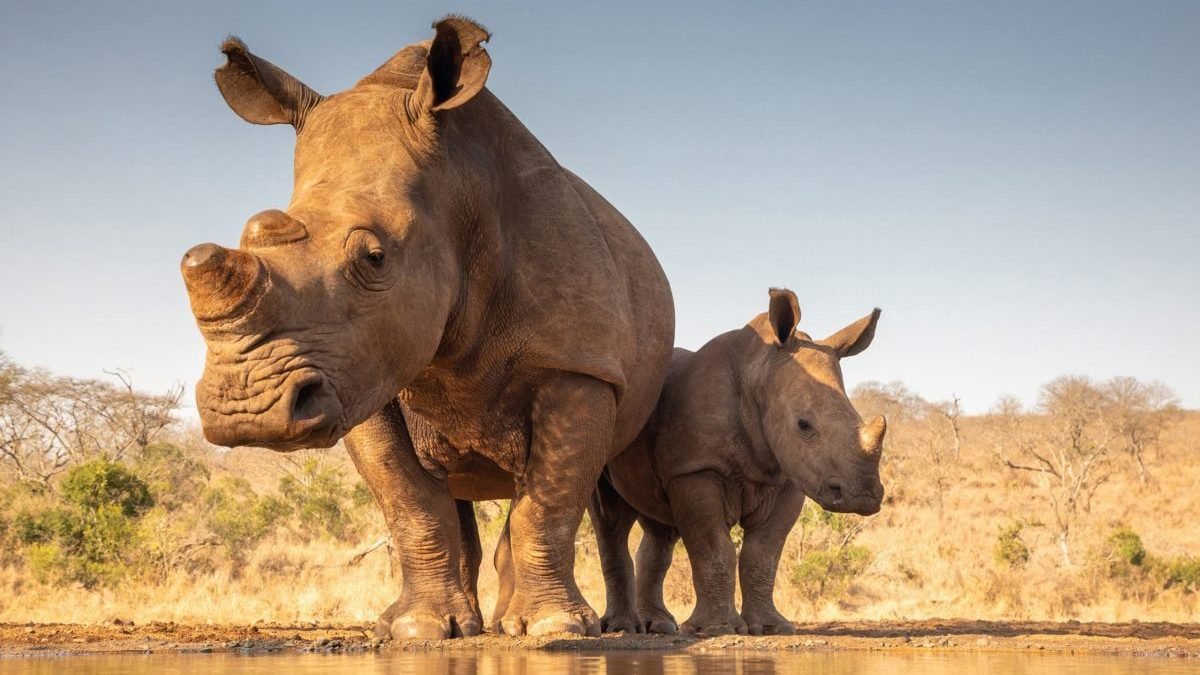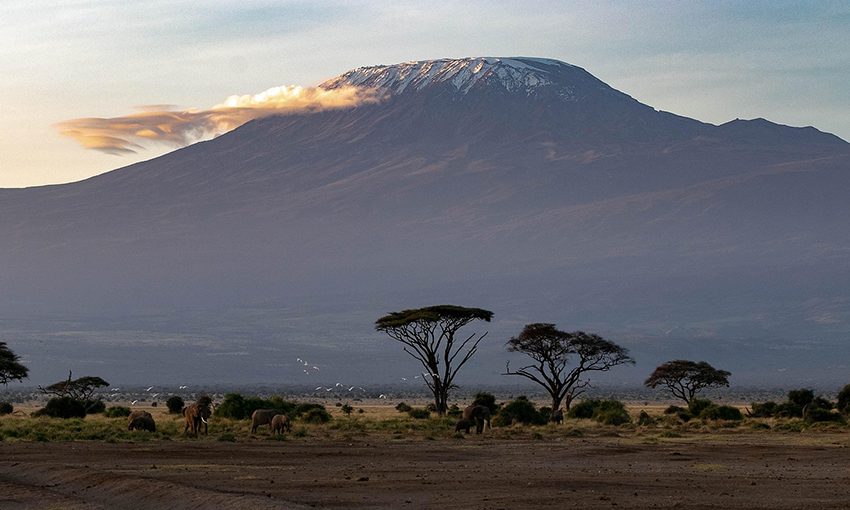Iconic Tanzania Safaris
Tour Overview
The Serengeti National Park is famous for good reason. It is the scene of the incredible annual migration of 1.5 million wildebeest, somehow sensing how to follow the greenest plains for survival. The Maasai, who have grazed their cattle here for millennia, call it 'the place where the land moves on forever'. Of course, the wildebeest share this astounding home with many other fascinating animals, including top predators and even a few rare black rhino.
Ngorongoro National Park Entirely deserving of its UNESCO world heritage site status, this mid-size park contains three volcanic craters, forests, gorges, bush land & savannah. The famous Ngorongoro crater, 300 million years old, 20km in diameter and 600m deep, is the world's largest caldera. The area boasts the oldest known hominid footprints from 3.6 million years ago, and now sets a precedent for how humans and wildlife can coexist harmoniously. The wildlife in this area is stunning, diverse and abundant, giving a great chance of spotting "the big 5".
Tour Highlights
- Incredible Migration: Witness the annual migration of 1.5 million wildebeest, a breathtaking natural phenomenon as they seek the greenest plains for survival.
- Cultural Significance: The Maasai refer to this area as "the place where the land moves on forever," highlighting its vastness and beauty.
- Diverse Wildlife: Home to a wide variety of fascinating animals, including top predators and the rare black rhino, making it a prime location for wildlife enthusiasts.
- World's Largest Caldera: Explore the Ngorongoro Crater, a massive 20 km-wide caldera that is 600 meters deep and offers stunning landscapes.
- Harmonious Coexistence: Experience a model of how humans and wildlife can coexist, with abundant and diverse wildlife, including opportunities to spot "the Big 5."
What's included
Itinerary
We depart Moshi for Londorossi Gate, which takes about 4 hours, where you will complete entry formalities. Then drive to the Lemosho trailhead. Upon arrival at trailhead, we begin hiking through undisturbed forest which winds to the first camp site.
Pick up from your hotel in Arusha and drive towards Tarangire National park for a full day of game drive. Tarangire National Park is the sixth largest national park in Tanzania, it is located in Manyara Region. The name of the park originates from the Tarangire River that crosses the park. The Tarangire River is the primary source of fresh water for wild animals in the Tarangire Ecosystem during the annual dry season. The park is famous for its high density of elephants and baobab trees. Visitors to the park in the June to November dry season can expect to see large herds of thousands of zebra, wildebeest and cape buffalo. Other common resident animals include waterbuck, giraffe, dik dik, impala, eland, Grant's gazelle, vervet monkey, banded mongoose, and olive baboon. Predators in Tarangire include lion, leopard, cheetah, caracal, honey badger, and African wild dog. Later drive to Sangaiwe Tented Lodge for diner and overnight.
More than 400 species of birds inhabit the park and many remain throughout the year. Because of this Lake Manyara National Park is a good spot for bird watching. Visitors to the park can expect to see upwards of 100 different species of bird on any day.
Leopards, lions, cheetahs, elephants, blue monkeys, dik-dik, gazelles, hippopotami, Masai giraffe, impala, zebras and many more wild animals inhabit this park and many can be seen throughout the year. There is a hippo pond at one end of the park. where visitors can get out of their cars and observe from a safe distance. The leopards and lions are both known to lounge in the trees while not hunting for prey.
Once the calves are born, the herds don�t move much. The chance of witnessing a wildebeest birth is high. Predator interaction is also very likely, as lion and leopard move into the region to prey on young and vulnerable calves. Diner and overnight at Tanzania Bush Camp Ndutu Ngorongoro.
We drive to our tented camp for diner and overnight at Tanzania Bush Camp - central Serengeti.
FAQ
Tanzania offers the best and most consistent wildlife viewing opportunities year-round. The dry season (June to October) is generally considered the best time overall for game viewing. However, even the wet season in Tanzania (November to May) has an amazing amount to offer in terms of wildlife viewing. April and May are probably the least optimal months to go since many camps close during the long rains. However, there are still enough places open for us to put together a magnificent itinerary for you if those months are your only option. And, since it is the low season, you will enjoy the benefits of a less crowded and less expensive journey!
Your passport must be valid for at least six months on the day you depart from your home country. In addition, your passport must contain at least four blank visa pages that are two sets of two opposing blank visa pages.
It is very important to set an appointment with a travel doctor in your home country before you come. Depending on the situation, you might take vaccine for yellow fever. If you go to Zanzibar or come from (or transit in) an endemic yellow fever country, proof of vaccination against yellow fever may be required at the airport. Vaccinations are recommended for travelers going to Tanzania: yellow fever, hepatitis A and a combined tetanus, diphtheria and inactivated polio vaccine (Td/IPV). Proof of Yellow Fever vaccination is required if you are traveling to Tanzania from countries that have Yellow Fever Endemic or travelers who transit in Yellow Fever Endemic Areas, only if the transit period at the airport is 12 hours or more.
Check the CDC’s website for updated health information for travelers to Tanzania. http://wwwnc.cdc.gov/travel/destinations/traveler/none/tanzania
If you use prescription medication or if you suffer from a medical condition that requires special consideration, it is best to consult your physician and inform the aircraft company before flying. You may require a medication passport to show authorities abroad and flight attendants that you need certain medication. In the event that you lose your medication or require additional supplies abroad, the medication passport will allow you to refill your prescription. In addition, you will usually need a doctor’s certificate in the form of a Schengen medical certificate or a medical certificate written or translated into English. The same may apply to traveling with medical equipment. Enquiring about these things may take weeks, so it is best to start well in advance.
Travel insurance is the traveler’s own responsibility. We recommend that you take out travel insurance in your home country that will cover, for instance, loss, damage or theft of luggage, money and other valuables, medical expenses, repatriation expenses, etc. Consider also any additional cover you may need, such as for extreme, specialist or high-risk sports (scuba diving, canoeing, mountain biking, etc.). Mountain climbing requires a separate mountaineering insurance policy. Travel with Us accepts no liability whatsoever in connection with any such activities.
Situated in the eastern part of the African continent, bordering on the Indian Ocean, Tanzania enjoys mostly warm weather all year round. The climate varies considerably in this large country, but a tropical wet and dry climate, or tropical savanna climate, predominates. The eastern portion of Tanzania has more periods of rainfall and droughts, while Central Tanzania is predominantly very dry. The main rainy season or ‘long rains’ in Tanzania lasts from March until the end of May. This is the time when everything turns vibrant green – a great time to see wildlife! Then, between June and August, it is drier and cooler in Tanzania. The beginning of October marks the start of the period of ‘short rains’ during the daytime, with warm summer temperatures. January, February and March are the driest summer months of the year. As your tour will take you to various altitudes, ranging from mountainous regions to lower coastal areas, temperatures will differ. In view of the different seasons and the fact that it can get a little chilly at night, it is advisable to pack clothes that you can layer easily.
The local currency is the Tanzania Shilling (TZS). In hotels and restaurants, bills can normally be paid in USD, but in local shops and markets, you will need TZS which is available at most banks and bureaus in major towns. ATMs are available in Dar es Salaam and Arusha, and most major towns, but once you are out on safari (in the bush), you will not have access to either banks or ATMs, so exchange sufficient funds beforehand. Credit cards are normally accepted in the bigger hotels and restaurants, but in the smaller lodges or hotels, there is often no access.
In honor of their religious beliefs and culture, Tanzanian people always dress modestly. In the privacy of your accommodations or at the beach, you do not need to concern yourself with any dress code, but if you mix with the local population, it is appropriate to wear clothes that cover the body, especially shoulders and legs. This is a simple courtesy that shows respect for the local population.
- All necessary documents: passport, vaccine certificate and others that might apply.
- Any medication you might need: This should include medication for possible common situations like headaches or diarrhea.
- Sun block, sunglasses, hat, lip balm and moisturizer.
- Your camera: we recommend bringing a wide lens (about 17-55mm) for those scenery pictures, and a telephoto lens (in the 200-400mm range) to catch animals at a distance.
- Binoculars: We do provide a pair of top notch binoculars in the vehicle but feel free to bring your own which you may be more used to.
- Clothes: Comfortable and casual clothing, with khaki, beige or green colors. You should pack t-shirts, shirts with long sleeves, long pants, a sweater and a jacket (for the cold mornings), swimwear (if the accommodations you selected have a pool or if you do a beach extension) and comfortable hiking shoes.
- Insect repellent





















